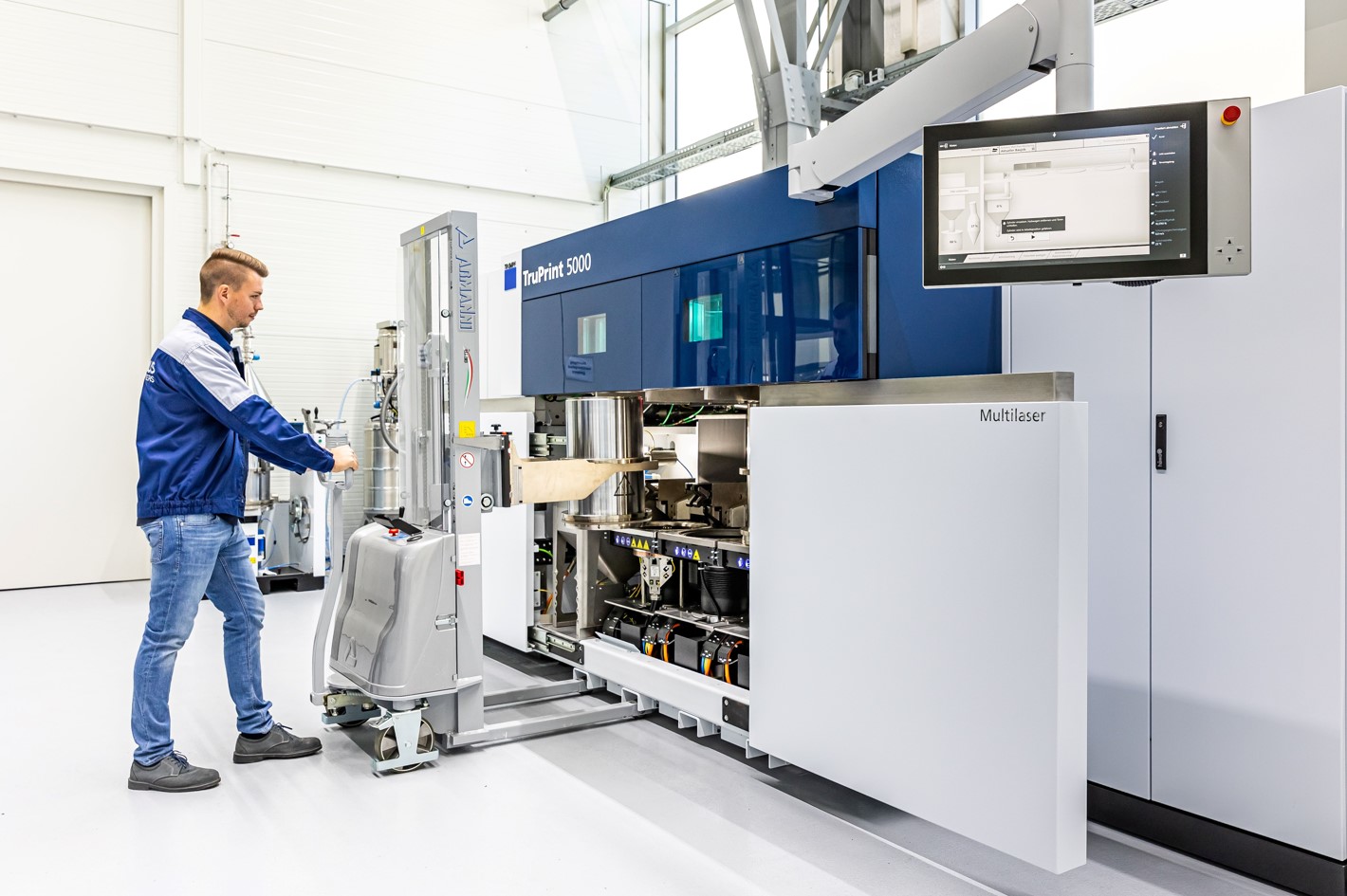With over 9,400 locking shafts produced today via Additive Manufacturing, Airbus Helicopters is taking the next phase on its journey with the opening of its 3D printing centre, at its Donauwörth site.
Airbus strives to provide the most efficient helicopter solutions to its customers who serve, protect, save lives and safely carry passengers in demanding environments. The company that recently demonstrates how it saves on raw material and fuel costs with metal 3D printed parts is using AM for both prototyping and mass production purposes.
While conventional machining involves milling components out of solid blocks, AM uses laser beams to melt metal or plastic powders. In this way, the desired shapes are created layer by layer. This makes it easier to produce complex structures than with conventional methods. A conventional manufacturing process requires up to ten times more raw material than the final product, whereas additive manufacturing requires only 1.5 times as much, the company reminds.
The company currently operates three industrial 3D printers for components made of titanium, four for plastic parts and, as a new element, a 3D printer that can produce components made of aluminium. In a video released on their LinkedIn profile, one can see that the company also relies on the capabilities of automated depowdering machines manufactured by Solukon.
Since 2017, Airbus Helicopters has been mass-producing locking shafts for the doors of the Airbus A350, via AM, as part of the Donauwörth-based airplane door business. Eleven tonnes of titanium powder have been used in Donauwörth for printing the locking shafts, the company reports. Other 3D printed parts have been produced for the electrically powered CityAirbus NextGen and the experimental high-speed helicopter, Racer.
“Our extensive capabilities in this process along the manufacturing chain are a real competitive advantage,” said Stefan Thomé, Managing Director of Airbus Helicopters in Germany. “Among other advantages, 3D printing can reduce the weight of aircraft components which leads to less fuel consumption. Such potential can bring financial benefits and contribute to reducing CO2 emissions during operations.”
Remember, you can post job opportunities in the AM Industry on 3D ADEPT Media free of charge or look for a job via our job board. Make sure to follow us on our social networks and subscribe to our weekly newsletter : Facebook, Twitter, LinkedIn & Instagram! If you want to be featured in the next issue of our digital magazine or if you hear a story that needs to be heard, make sure to send it to contact@3dadept.com






